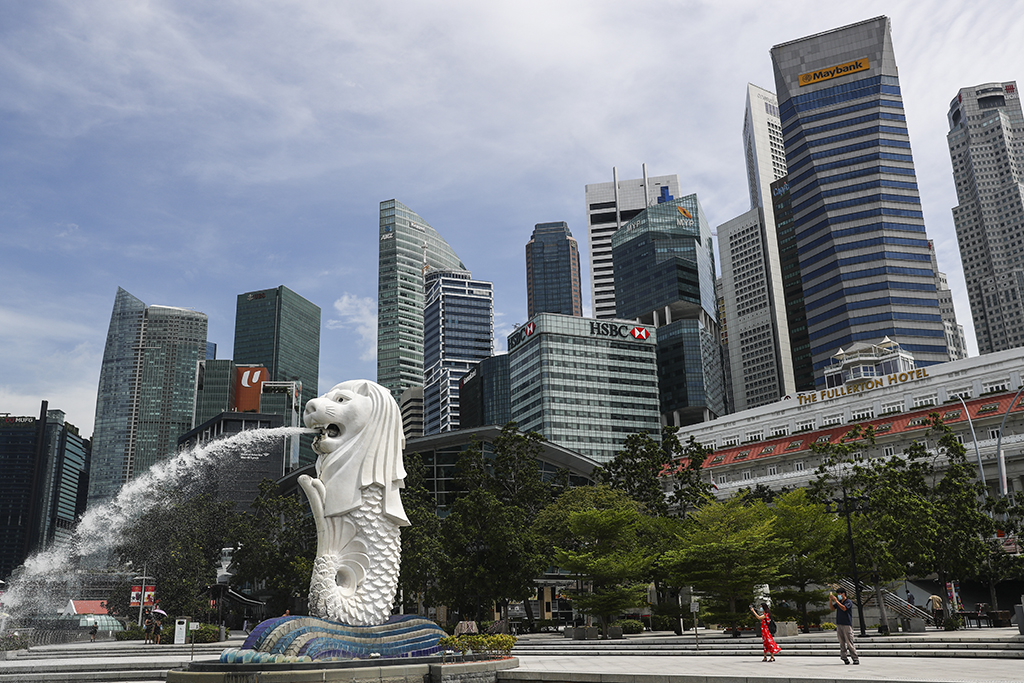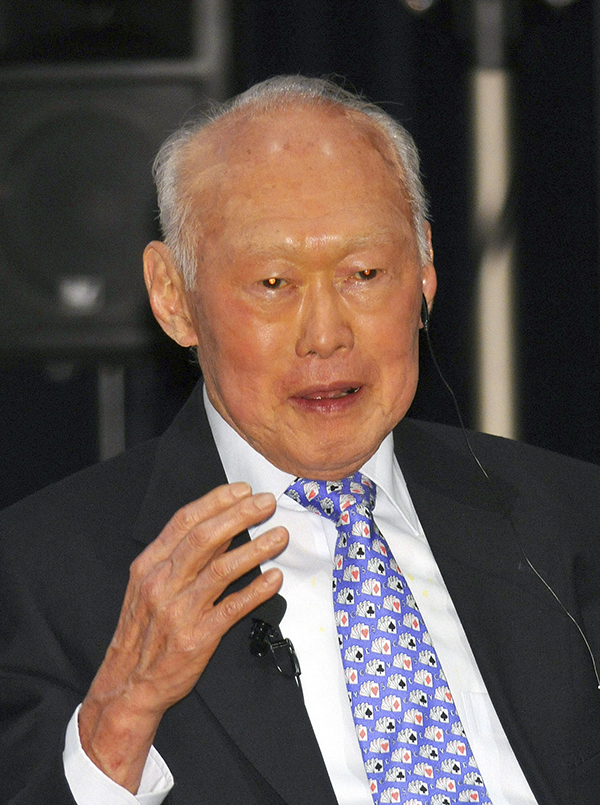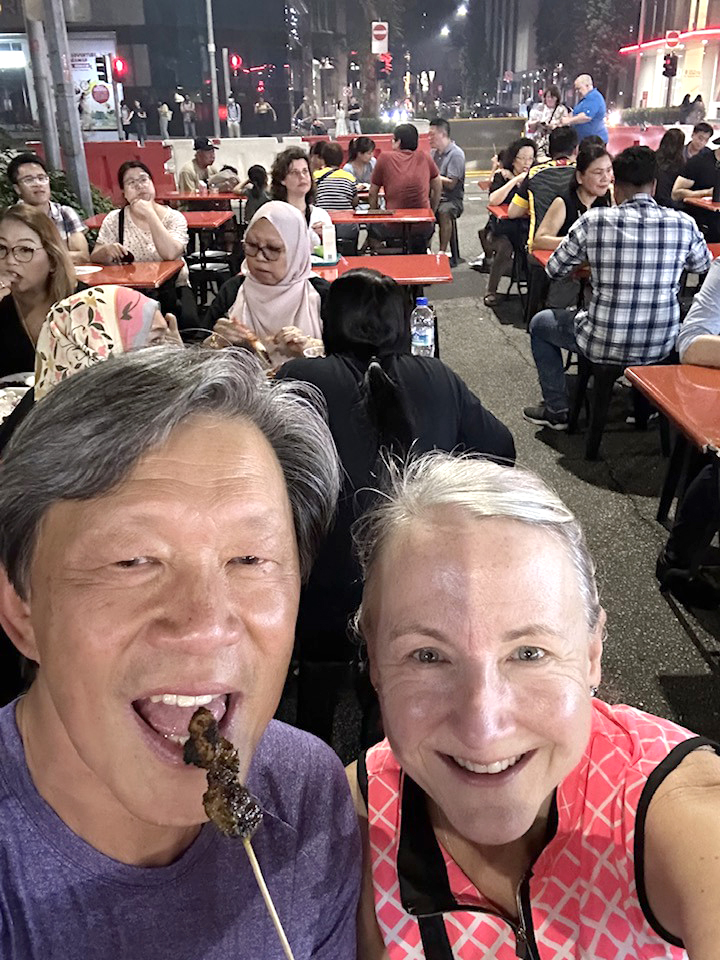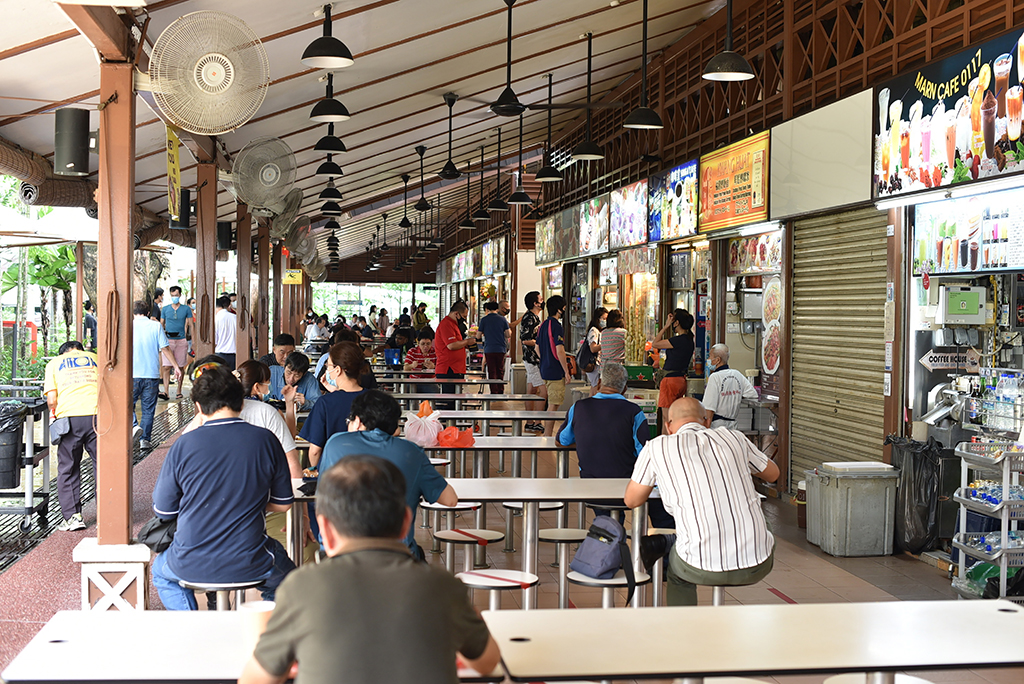By Kai Curry
NORTHWEST ASIAN WEEKLY

FILE – In this June 30, 2020, file photo, people are dwarfed against the financial skyline as they take photos of the Merlion statue along the Marina Bay area in Singapore. (AP Photo/Yong Teck Lim, File)
A crown jewel in a sea of jewels, with a lion’s roar in spite of its small size, Singapore has been more and more in our field of vision lately. We knew about it before, of course, and then “Crazy Rich Asians” (CRA) by Kevin Kwan, a Singapore-born American novelist, catapulted the tiny country to stardom by spotlighting its delicious food, its green garden streets, its wealthy residents, and its incredibly distinctive architecture.
The Republic of Singapore is located off the southern tip of Malaysia and as such, has a large population of Malay residents—about 13%. However, the largest ethnic group is Chinese, at almost 75%. This collection of islands is one of the world’s smallest countries, about the same square mileage as Tonga. It consists of one main island, and 60 smaller ones. This mighty tiny country has been colonized, first by Britain and then by Japan; it has been part of the federation of Malaysia; and it has become free, in 1965, as a sovereign nation.
We know Singapore by its iconic buildings, its gardens, and its governance. Before CRA, many in the United States only recognized Singapore as the place where you had better not drop your gum on the sidewalk—and in general you had best follow the law, as U.S. citizen Michael Fay found out in 1994 when he was sentenced to punishment by caning for theft and vandalism. In fact, that’s probably one of the main influences of Singapore on us here in the U.S. before CRA—worrying about getting in trouble when we get there!
Alan Chang, a Taiwanese American who lived in Singapore for eight years, and now lives in Seattle, put it this way, “Singapore is famous for being a clean city. When I was living in Singapore, they even had police wearing civilian clothing sitting outside of shopping malls catching people littering, especially near the smoking zone.” Chang recognized that Singapore has a reputation for its strict laws.
“Singapore’s crime rate is low as they really enforce the law with severe punishment for people who break the law. Singapore still has the death sentence and it is done by hanging.” Even famous Singaporean Kwan is wanted for not completing his mandated Singaporean military service. His role in putting Singapore on the map does not exempt him. For now, Kwan does not return to the country he helped make famous.
Americans are fascinated with the “lifestyle of the rich and famous” shown to us by Kwan. Through him, we learned that Singaporeans frequently travel worldwide, and call many places home. In 2022, Singapore, the city, was rated as the most expensive in the world. So what products do we get here that might help us understand Singapore better from afar? Its diversity is a double-edged sword, as there is not necessarily something called “Singaporean” (besides the residents, of course) outside of the place itself.
“Singapore and Malaysia share almost the same culture,” Chang pointed out. “So most stuff is from Malaysia instead of Singapore.”

Lee Kuan Yew at the 15th International Conference on “The Future of Asia” in Tokyo in 2009. (AP Photo/Katsumi Kasahara)
Once part of the Malaysian Federation, the insistence of Singapore’s leadership at the time on equity for all led to Singapore’s expulsion from the Federation. Chang wishes that people would remember Singapore’s “founding father” and former prime minister, Lee Kuan Yew, who was integral in turning Singapore into a “tiger” to be reckoned with.
“There is too much to talk about him,” Chang said. “But he is one of the few people I truly respect. I wish more people would learn how he built a tiny poor island with no resources to one of the most desired places in Asia.”
Singapore’s geographic placement and its status as an economic powerhouse makes it a key strategic ally of the United States—and also makes the small nation vulnerable to whatever we do, such as starting a trade war with China. Since Yew, Singapore has encouraged foreign multinational companies, such as Texas Instruments and Fairchild Semiconductor from the U.S., to open factories there, adding to our own prosperity back in the States. One of the most well-known companies that has dual headquarters in the U.S. and Singapore is Razer, of which Singaporean Min-Liang Tan is a co-founder. Other famous Singaporeans who are recognizable in the U.S. include Ng Chin Han, who starred in 2008’s The Black Knight, and Gwendolyn Yeo, who has a recurring role on General Hospital.
Chang has a well-rounded memory of his time in Singapore, and much to recommend. “Singapore is known as a food paradise, as it is a multi-racial society and every culture brings their food into Singapore.” How to replicate that experience here, such as we saw in CRA when the actors famously visit Orchard Road—a happening “hawker center”—fresh off the plane? Perhaps go to Seattle’s Night Market on the north side, which is up and running again after the pandemic. Many ethnicities are represented by this mighty tiny nation, so you wouldn’t be amiss to make a stop in Chinatown, at an Indian, Malaysian, or Arabian restaurant. Famous dishes from Singapore that will be familiar to Seattleites include laksa, a spicy noodle soup, or dishes from Hainan like chicken curry rice.

Tony Cheng of Bellevue and wife, Mary Pat, enjoy food at a hawker center in Singapore on May 8, 2023.
It’s likely there are products in your home right now that you do not realize hail from Singapore. That shirt with the crocodile logo? Crocodile International Pte Ltd was formed in 1947 to make just that one iconic shirt—and has expanded to other items such as watches and handbags. A good amount of traditional herbal medicine comes from Singapore as well.
Singapore’s mighty roar on the global stage echoes here more than we know.
Kai can be reached at info@nwasianweekly.com.





I recently had the pleasure of reading this captivating blog post on the Northwest Asian Weekly website, titled “Singapore: The Island Nation with the Roar of a Tiger.” As someone who has always been fascinated by the rich culture and dynamic growth of Singapore, this article beautifully captures the essence of the nation and its remarkable achievements , “Singapore: The Island Nation with the Roar of a Tiger” is a captivating and informative piece that beautifully encapsulates the spirit of Singapore. It highlights the nation’s remarkable journey, cultural diversity, commitment to sustainability, and global achievements. Whether you’re a resident of Singapore, planning a visit, or simply interested in learning about this dynamic city-state, this article is a must-read. Kudos to the Northwest Asian Weekly for showcasing Singapore’s vibrant and inspiring story.